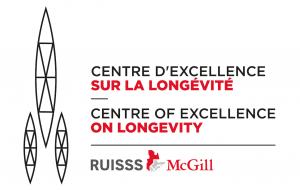Benchmarking and validating of computerized olfactory test for subjects at the light dementia phase of Alzheimer’s disease
Background
Population aging is associated with an increase in the number of sufferers of Alzheimer’s disease (AD), which in turn leads to a corresponding growth in the costs of caring for these persons. We do not currently possess sufficient knowledge concerning the biological sign markers which would allow us to better prevent and delay the effects of AD. Scientific researchers are unanimous, and have validated that olfactory identification is a reliable biomarker in the illnesses’ preclinical phase, or light dementia phase. Olfactory disorder has been accepted as a forerunning sign of the evolution of light cognitive decline into AD, as precisely as any other biological marker. However, the studies highlighting this association have also made evident that there exist no benchmark or absolute reference in olfactory study, specifically for the detection of Alzheimer’s disease, and that memory clinics only rarely make use of these in their clinical practice. The benchmarking and validation of a test conceived following the recommendations of memory clinic professionals are necessary.
Objectives
- -To benchmark a computerized olfactory test following the recommendations of professionals employed by the French Memory Centres
- To validate this test by comparing the results obtained by reference subjects and subjects suffering from Alzheimer’s disease
- To identify the most effective fragrances used in the olfactory test
- To verify whether or not cultural variance exists by comparing the results collected for Quebec by the JGH to those collected by the Centre Mémoire Ressource et Recherche in Nice, France
- To verify whether or not there exists a correlation between results to the olfactory test and results obtained from the general cognitive evaluation tests (MMSE)
- To verify whether or not there exists a correlation between results to the olfactory test and state of frailty, as determined by the results presented by the CESAM health self-evaluation
Methods
This controlled monocentre trial (Jewish General Hospital; Montreal, Quebec, Canada) includes two subject groups: A Control group and a group of light dementia-phase Alzheimer’s disease sufferers. Each olfactory test (Bellecôte and Odor range) takes place once and lasts 15 minutes, on average. Patients recruited to the Control group are aged 60 and over, without signs of mixed or vascular dementia or isolated cognitive disorders, and cannot present any unstable psychiatric or physical characteristics which are acute or serious enough to prevent them from participating in the study. They also cannot suffer from uncorrected visual or auditory disability or anosmia (complete olfactory loss). Patients recruited to the Intervention group are limited by the same restrictions, and must also have been diagnosed with light dementia-phase Alzheimer’s disease.
Prospects
To put in place a systematic olfactory (non-invasive) test to help diagnose AD
To help diagnose AD earlier
To promote the taking in account of olfactory loss in Alzheimer’s care
Partners
Centre Hospitalier Universitaire de Nice, France
Memory Clinic, Jewish General Hospital
Division of Geriatric Medicine, Jewish General Hospital



